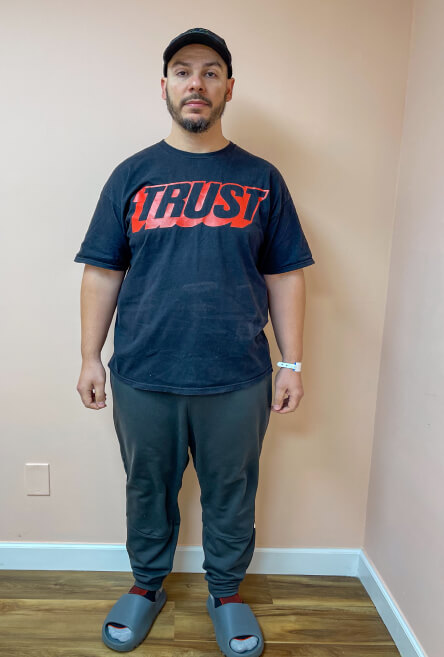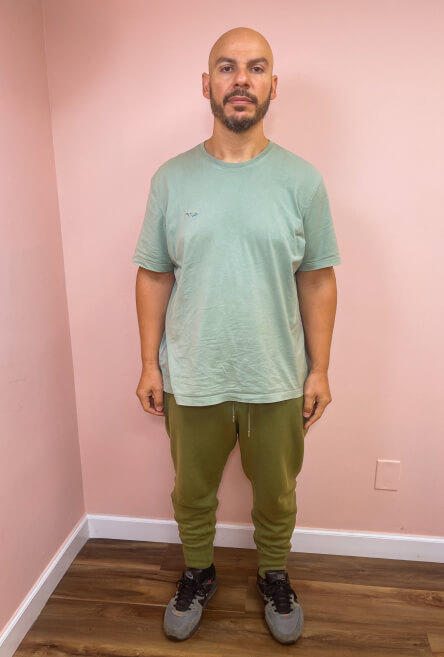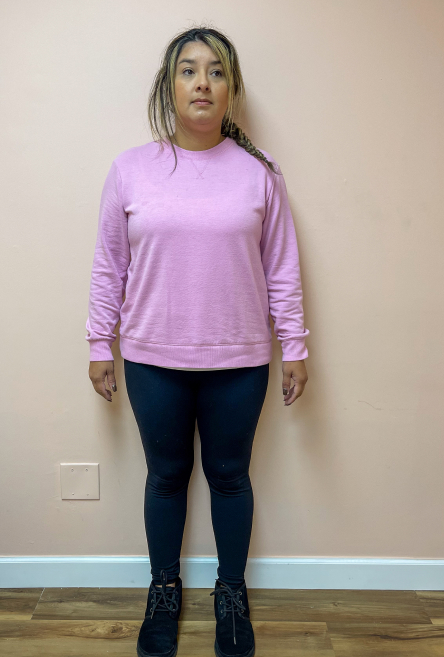SPATZ3 Balloon
Intragastric Balloon

What Is a SPATZ3 Gastric Balloon?
The Spatz3 gastric balloon is a non-surgical weight loss procedure that involves placing a deflated balloon into the stomach, which is then inflated to occupy space and create a feeling of fullness.
The balloon remains in the stomach temporarily for eight months to assist individuals in portion control and in reducing food intake. This temporary intervention can help jumpstart weight-loss efforts and promote healthier eating habits. The procedure is minimally invasive and does not require any permanent changes to the digestive system.

How Does the SPATZ3 Balloon Work?

By occupying space in the stomach, the balloon promotes portion control and limits food intake, enabling individuals to feel full with smaller amounts of food. This physical restriction encourages patients to make conscious choices about their diet and adopt healthier eating habits.
The Spatz3 is an adjustable gastric balloon, which makes it unique in the marketplace. The volume of saline can be adjusted while it is implanted in the patient’s stomach. If the patient’s progress stalls, it is possible to increase the size of the balloon so it occupies more space and can promote additional weight loss.
Additionally, if the patient is intolerant to the balloon, the volume can be reduced, which can possibly avoid the need to remove the balloon totally.
Additionally, the presence of the Spatz3 balloon serves as a reminder to prioritize nutrition, engage in regular physical activity, and seek ongoing support from healthcare professionals.
The ultimate goal is to empower patients to make lasting lifestyle changes that lead to not only immediate weight loss but also long-term weight management and improved overall health.
How Much Weight Can I Expect to Lose with SPATZ3?
The amount of weight loss achieved with the Spatz3 balloon can vary from person to person. It depends on various factors such as individual metabolism, adherence to a healthy diet and exercise regimen, and overall commitment to lifestyle changes. On average, individuals who undergo the Spatz3 balloon procedure may expect to lose approximately 18% to 21% of their total body weight, or an average of 35–55 pounds, during the time the balloon is in place, which is usually around eight months.
The success of the Spatz3 balloon relies significantly on the individual’s commitment to making sustainable lifestyle changes and maintaining a healthy diet and exercise routine even after the balloon is removed.
SPATZ3 Weight Loss Patients


Roman G.


Karen M.


Mahlon W.
How Does the SPATZ3 Balloon Promote Weight Loss?
Before the procedure, you will undergo a thorough medical evaluation to ensure that you are a suitable candidate for the Spatz3 balloon.
The Spatz3 balloon placement is typically done during an outpatient endoscopic procedure, so you won’t need to stay overnight in the hospital. You will be given sedation to ensure your comfort during the procedure.
The gastroenterologist will insert a flexible endoscope through your mouth and into your stomach. The endoscope has a camera that allows the doctor to visualize the stomach and guide the placement of the balloon.
Then the deflated Spatz3 balloon is inserted into the stomach through the endoscope and inflated with a sterile saline solution once it is in the correct position. The amount of saline can range from 300 ml to 900 ml and is customized to suit the needs of each individual patient. With the Spatz3 balloon, the doctor has the option to adjust the balloon’s volume and size at any time while it is in the patient’s stomach to address adverse side effects or weight loss plateaus.
What Can I Expect During the SPATZ3 Procedure?
In October 2021, the FDA approved the Spatz3 gastric balloon to be used as a treatment to help overweight and obese patients lose weight in a safe and effective manner.
The key objective of the Spatz3 balloon is for the patient to establish healthier lifestyle habits that will promote weight loss in the immediate and long term. The Spatz3 balloon, similar to other gastric balloons, aims to help patients develop sustainable and healthy lifestyle habits that will facilitate weight loss in the short and long run.
What Is the Recovery After SPATZ3 Insertion Like?
Most patients experience some discomfort, nausea, or bloating initially, but these symptoms usually subside within a few days.
Following the Spatz3 balloon placement, patients receive instructions on a specific diet and lifestyle modifications to follow during the time the balloon is in place. Regular follow-up appointments will be scheduled to monitor progress and provide guidance on nutrition, exercise, and any necessary adjustments.
Is the SPATZ3 Balloon Covered by Insurance?
Generally, insurance does not cover the Spatz procedure. However, at Batash Endoscopic Weight Loss Center we do our best to offer several financing options so that the cost of the procedure will not be an obstacle to improving your health and life. Please reach out to us to learn more about available financing programs.
How Do I Know If the SPATZ3 Gastric Balloon Is Right for Me?
Set up an appointment with the Batash Endoscopic Weight Loss Center. We specialize in endoscopic bariatric procedures and can assess your specific situation and determine if the Spatz3 gastric balloon is the right choice for you.We will evaluate various factors and provide personalized recommendations based on your individual needs and goals. Contact us today to learn more about the Spatz3 Adjustable Intragastric Balloon.
FAQs
The Spatz3 gastric balloon differs from others due to its adjustable volume, allowing personalized changes to enhance weight loss or reduce discomfort.
The SPATZ balloon helps to effectively aid in weight loss and must be used in conjunction with diet, exercise, and a behavior modification program for the best results. The amount of weight lost and maintained depends on how closely each patient follows their diet, and adopts long-term lifestyle changes. While SPATZ clinical studies show that weight loss varies from person to person, patients can lose up to 70 lbs with SPATZ. On average patients lost 3.1 times the weight of those on a diet and exercise programs alone.
SPATZ is for adults 18 and older with a body mass index (BMI) of 30 to 40. Individuals should be willing to take part in a medically supervised program. SPATZ is a proven and successful way to lose weight. Make your appointment today to learn if you qualify for SPATZ.
Doctors perform the simple procedure in 20-30 minutes. The ORBERA non-surgical procedure is performed under light sedation. Dr. Steven Batash places an expandable, soft silicone balloon intragastrically. Next, the balloon is inflated using sterile saline water. Most patients return home a few hours after the procedure. Our office will follow up during the next few days to ensure patients are comfortable.
In the first few days after placement, patients may experience nausea or vomiting. In some patients side effects may last up to one to two weeks. Batash Medical will work with you to prescribe medication that will proactively manage these symptoms and help you adjust to the balloon.
The Batash Medical staff including Dr. Steven Batash, a OnTrack coach and exercise coach, work to guide patients through the process of developing a customized diet and exercise program that facilitates healthy lifestyle choices. Our OnTrack Coaching approach is based on the psychology of eating and an exploration of your relationship with food. Patients are expected to see our OnTrack coach every 4-6 weeks to assess your weight loss progress and help you learn new eating habits. In addition to helping you navigate your diet and adjust to your new lifestyle, we will assess your basal metabolic rate and nutritional needs before running an in-depth body composition analysis. If needed, Batash medical will recommend nutritional supplements and protein shakes. Patients can opt to buy these supplements in our office or order them online.
An SPATZ balloon deflation or leak is a very rare, but not impossible. Should the balloon spontaneously deflate, you may no longer feel full after meals. If a patient suspects this may be the case, notify us immediately. A simple abdominal X-ray will determine whether either has occurred. In the event that of damage, our office will arrange to remove deflated balloon.
Patients who adopt this new healthy lifestyle will succeed at maintaining weight-loss. Published clinical studies of ORBERA show that patients who adhere to the prescribed diet and exercise program can maintain weight loss through dieting post gastric balloon removal.
No. You should not feel the SPATZ gastric balloon.
The SPATZ managed weight-loss system is not covered by health insurance; however, we offer financing options through Care Credit or Prosper Financing. Our office staff will assist you with obtaining financing, provide complete instructions for the procedure, and help patients with the medications they may need before and after the procedure.
The cost of the SPATZ gastric balloon can vary by weight loss practice, geographical location, and patient specifics. According to The Bariatric Surgery Source Website, the average cost of a gastric balloon in the United States is $8,248. To find out the cost of the Orbera balloon 12-month program at Batash Endoscopic Weight Loss Center contact us today or make an appointment online. We offer patient financing plans that can help by offering low monthly payments making the procedure affordable and attainable.

